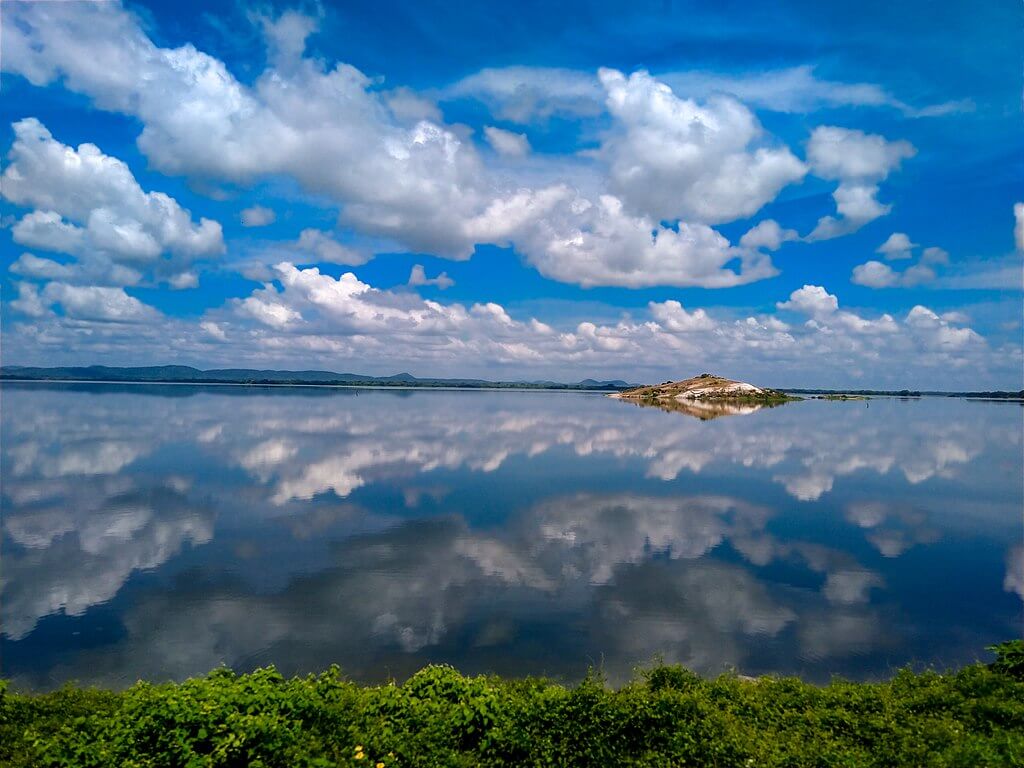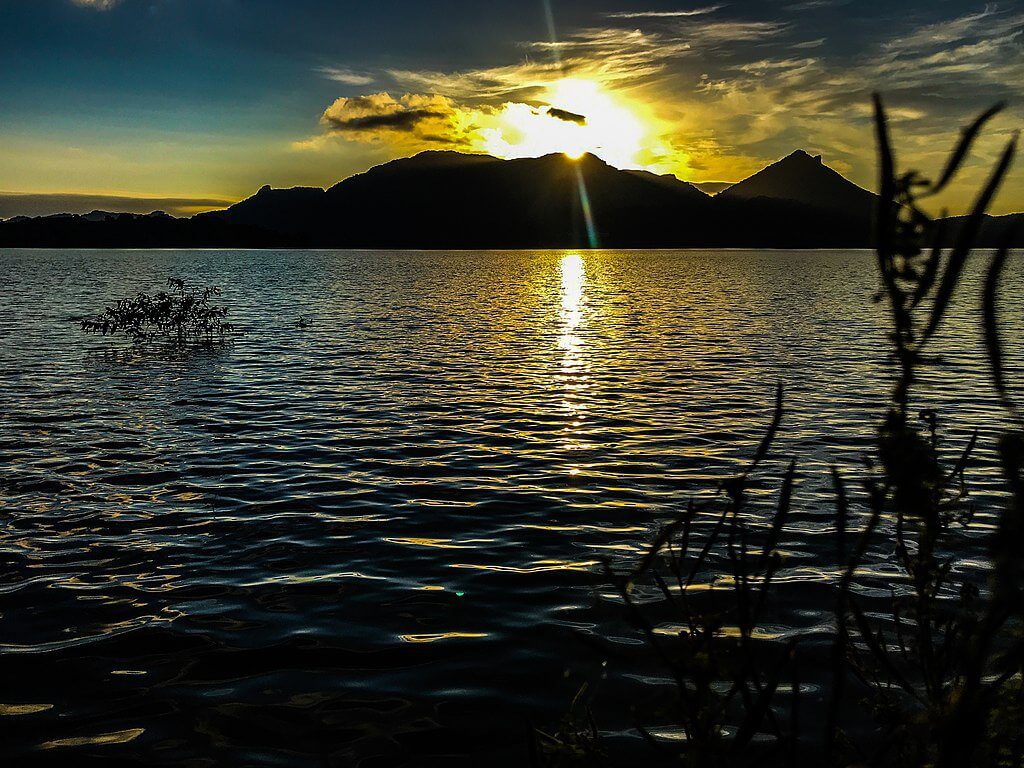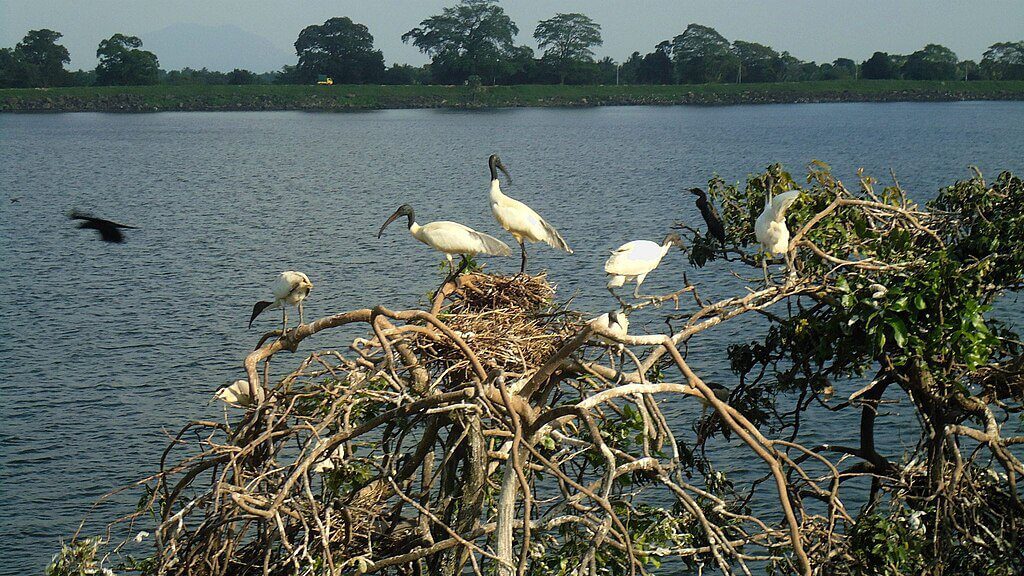How an Ancient King Built an Ocean: Exploring Parakrama Samudra

The King’s Vision
Imagine standing on the shore of what looks like a vast, natural ocean. A warm breeze ripples across the water, carrying the sounds of exotic birds. But this is no ocean. You’re in the heart of Sri Lanka, standing beside a 12th-century masterpiece of engineering: the Parakrama Samudra, or the “Sea of Parakrama.”
This is a place that breathes history. It was built by King Parakramabahu the Great, a visionary ruler who famously declared, “Let not even a single drop of water that falls on the land go to the sea without serving humanity.” He wasn’t kidding. This massive reservoir was the heart of a glorious ancient capital, Polonnaruwa, feeding its people and its rice paddies. To visit Parakrama Samudra is to step back in time and witness the ambition of a lost civilization. It’s a place where history isn’t just in books; it’s in the very water you see.
The Travel Guide
Best Time to Visit
The best time to explore Parakrama Samudra and the surrounding ruins of Polonnaruwa is during the dry season, which typically runs from January to September. During these months, the sun is out, the ground is firm, and the ancient stones are warm to the touch, making it perfect for cycling and walking.
However, the shoulder season (around October to December) has its own magic. The rains wash the dust from the air, leaving everything lush and vividly green. The sky can be dramatic, with heavy grey clouds creating a moody, atmospheric backdrop for your photos. A sudden downpour might force you to take shelter in a small village tea shop, offering an unexpected chance to connect with locals.

What to Do
- Walk or Cycle the Bund: The bund, or the dam wall, stretches for over 13 kilometers. The best way to experience its scale is to rent a bicycle. As you pedal along the top, you have the immense “sea” on one side and lush paddy fields on the other. It feels like you’re riding on the spine of history.
- Marvel at the King’s Statue: Near the southern end of the bund stands a commanding stone statue. For years, historians have debated its identity. Is it King Parakramabahu himself, holding a yoke of kingship? Or is it a revered sage? This mystery adds another layer to the site. Stand before it and decide for yourself.
- Explore the Ruins of Polonnaruwa: Parakrama Samudra was the lifeblood of this ancient city. Rent a bike or a tuk-tuk and spend a day exploring the nearby UNESCO World Heritage site. You’ll find the ruins of the Royal Palace, breathtaking Buddha statues carved into rock at Gal Vihara, and ancient council chambers, all sustained by the water from this great reservoir.
- Go Birdwatching: The reservoir is a haven for birdlife. Take a simple boat ride with a local fisherman in the early morning or late afternoon. You’ll see cormorants, eagles, and pelicans, all living amongst the flooded roots of old trees. It’s a peaceful way to see the reservoir from a different perspective.
Getting Around
- Bicycle (The Best Way): Renting a bicycle is cheap, easy, and the most immersive way to see the area. You can stop whenever you want, feel the breeze, and truly appreciate the scale of the ruins and the reservoir. Most guesthouses offer rentals.
- Tuk-Tuk (The Easy Way): If the sun is too hot or you’re short on time, hiring a tuk-tuk for a few hours is a great option. The drivers often know the area well and can act as informal guides.
- By Foot: For short distances, like walking along a section of the bund or exploring a tight cluster of ruins, walking is perfect. Just be sure to wear a hat and carry water!
Travel Tips
- Hire a Guide: For your first visit to the Polonnaruwa ruins, consider hiring a licensed guide. They can bring the stones to life with stories of the kings, queens, and monks who lived there.
- Stay Hydrated: The Sri Lankan sun is strong. Carry a reusable water bottle and fill it up whenever you can.
- Respect the Sacred: Many of the ruins are sacred sites. Remember to dress modestly (cover your shoulders and knees) when entering temple areas and always remove your shoes and hat.
- Chat with the Locals: Don’t be shy! The man selling king coconuts by the roadside or the family running your guesthouse has stories to tell. A simple “Ayubowan” (the traditional greeting) and a smile can open up a wonderful conversation.
Hidden Histories & Old Stories
The Name’s Origin: The name Parakrama Samudra literally translates to “The Sea of Parakrama.” It wasn’t just a poetic title. To the people of the time, who had likely never seen the ocean, this vast, man-made body of water was as immense and powerful as the sea itself. It represented the king’s power to tame nature for the good of his people.
An Old Traveler’s Impression: While we don’t have many detailed accounts from that era, imagine being a trader or a monk traveling for weeks through dense jungle. Suddenly, you emerge to see this shimmering, endless expanse of water, with a magnificent palace city rising on its banks. It must have felt like arriving in a different world, a testament to a civilization at the peak of its power.

A Simple Ending
Parakrama Samudra is more than just a big lake; it’s a liquid monument. It’s a story of vision, ambition, and the deep connection between a civilization and its environment. Visiting this place allows you to walk, cycle, and sail through the pages of one of Sri Lanka’s most glorious chapters.